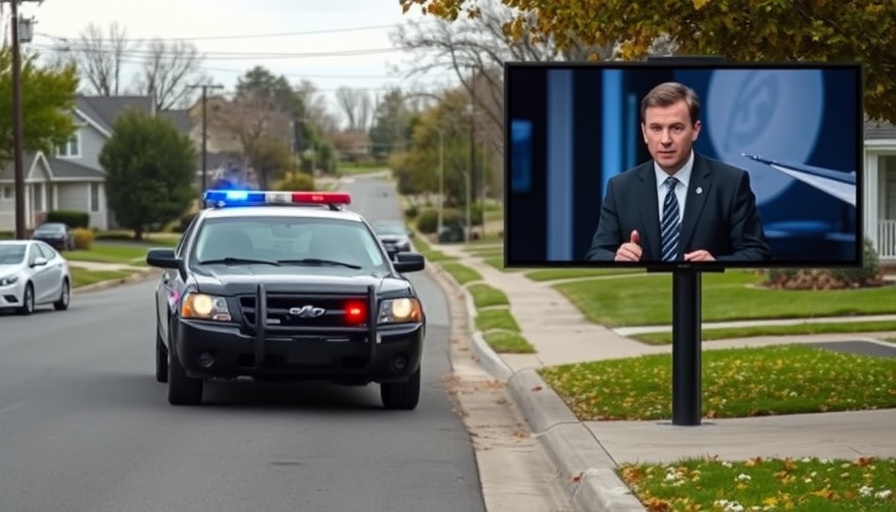
Unraveling the Legend: The Disappearance of Jimmy Hoffa
Fifty years have passed since the legendary figure Jimmy Hoffa vanished into thin air, leaving behind one of the most tantalizing mysteries in American history. Hoffa, a prominent labor leader, famously disappeared on July 30, 1975, from a restaurant in Metro Detroit, and his case continues to baffle investigators and intrigue the public. This article delves into the events leading up to Hoffa's disappearance and the lingering questions that surround it, offering insight into the complexities of his life that ultimately defined the course of labor relations in American history.
In 'The Mystery of Jimmy Hoffa: 50 Years Later', the discussion dives into Hoffa's enigmatic life and disappearance, exploring key insights that sparked deeper analysis on our end.
The Rise of a Labor Icon
Hoffa's journey began humbly in Detroit, where he became an ardent advocate for workers' rights. His career blossomed when he joined the Teamsters in 1933, a union dedicated to representing both blue-collar and white-collar workers. Under Hoffa's leadership, union membership surged from 75,000 in 1933 to over two million by 1967. Hoffa was not just a union leader; he was a force of nature who fought tirelessly for labor rights, skillfully maneuvering through the complex landscape of American power dynamics. His profound impact on labor relations earned him both admiration and animosity, ultimately culminating in his conflicts with political powerhouses like the Kennedy brothers.
Fateful Day: July 30, 1975
The last known sighting of Hoffa was at the Machus Red Fox restaurant, where he was reportedly meeting with mob figures Tony Jackaloney and Anthony Provenzano, both known for their connections to organized crime. As the day unfolded, Hoffa's absence became alarming, leading to frantic searches, media frenzy, and extensive public appeals from his family. The investigation quickly spiraled into a national spectacle, with every theory gaining momentum.
Theories and Speculation: What Happened to Hoffa?
Numerous theories have emerged over the years regarding Hoffa's fate. Some suggest he was murdered by mobsters who deemed him a threat due to his intention to reclaim control of the Teamsters. Others speculate that he was transported to various burial sites across the country or even incinerated in nearby funeral homes associated with organized crime. As searches and tips flooded in, many have proven to be dead ends, each one adding another layer to the enigma.
Impact on Labor Relations
The unresolved nature of Hoffa's disappearance significantly impacted labor relations in the United States. His story symbolizes the dangers within the labor movement and the intertwining of organized crime and union leadership. In the wake of Hoffa's absence, public perception of unions grew more troubled, and the strictures of oversight tightened as law enforcement ramped up investigations into organized crime's influence over labor.
Media's Role: Mystique and Sensation
The media's sensational coverage of Hoffa's story both captured the national imagination and underscored the insecurities surrounding labor movements. Reporters flocked to Detroit to cover the mystery, framing Hoffa's story as one of heroic ambitions poisoned by the threats of organized crime. The case remains a captivating narrative—a story that continues to weave itself into the fabric of American cultural memory.
The Legacy of Jimmy Hoffa
Despite extensive investigation efforts and countless theories, the case of Jimmy Hoffa remains unsolved. His legacy as a labor leader endures, and the questions surrounding his disappearance continue to haunt both the families affected by his loss and the labor movement itself. The search for justice in Hoffa's case is emblematic of a broader struggle for transparency and accountability within unions, political systems, and law enforcement.
The Ongoing Investigation
The FBI continues to investigate the case, equipped with advanced technology and forensic methods, although concrete answers remain elusive. Many hope that someday, perhaps through newfound evidence or testimonies, the veil of secrecy will finally lift from this historic case. As Jimmy Hoffa's story fades further into the past, one thing remains clear: the questions surrounding his disappearance are as pertinent today as they were back in 1975.
As Michiganders, understanding our history allows us to engage with our present realities. Hoffa’s legacy represents both the triumphs of labor rights and the shadows of corruption that lurk beneath. For those invested in Michigan public safety and the ongoing evolution of its labor force, Hoffa’s story serves as a cautionary tale about the powerful interplay between labor, politics, and crime.
In conclusion, the story of Jimmy Hoffa is not merely a tale of a missing person but a reflection on America's labor history, the struggles for workers' rights, and the great challenges that remain today. It is a reminder that the fight for justice is ongoing, both for Hoffa's legacy and for the rights of workers everywhere.
 Add Row
Add Row  Add
Add 



Write A Comment